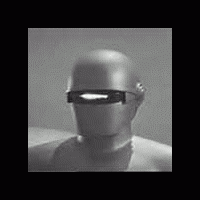PMEG
од komenstanto, 16. август 2011.
Поруке: 80
Језик: English
komenstanto (Погледати профил) 16. август 2011. 04.24.02
In page 55 there is a section about subphrases:
"Por priskribi O-vorton oni povas uzi subfrazon. La subfrazo ĉiam staras post la O-vorto:
Jen estas la pomo, kiun mi trovis.
Li rakontis la novaĵon, ke ŝi finfine alvenis."
The only two examples show an O-word such as pomo, followed by a subphrase. From this I gather one can never write:
"La pomo estas jen, mi trovis kiun."
darkweasel (Погледати профил) 16. август 2011. 07.05.03
komenstanto:Exactly. That’s what it means.
The only two examples show an O-word such as pomo, followed by a subphrase. From this I gather one can never write:
"La pomo estas jen, mi trovis kiun."
erinja (Погледати профил) 16. август 2011. 12.08.31
La subfrazo ĉiam staras post la O-vorto = The subclause always stands after the O-word.
komenstanto (Погледати профил) 16. август 2011. 14.49.56
"Mi trovis cxi-pomon."
When I learned basic Esperanto, I was informed that the word order had no meaning, that only the "-n" ending was relevant to show direction. Now I find this basic sentence:
"Jen estas la pomo, kiun mi trovis."
...can never be:
"La pomo estas jen, kiun mi trovis."
But nobody can give a straight answer. What magnetizes the O-word to the comma here? Is there a reason?
Miland (Погледати профил) 16. август 2011. 15.11.19
komenstanto:What magnetizes the O-word to the comma here?The 'magnet' is the k-word on the other side of the comma.
komenstanto:When I learned basic Esperanto, I was informed that the word order had no meaning..That is true up to a point. You can say Ĉi tiun pomon mi trovis and so move round words in a simple sentence like that. However an o-word followed by a comma, followed by a k-word is an ordered entity which cannot usually be changed. Thus Jen la pomo, kiun mi trovis cannot be changed to Kiun mi trovis, jen la pomo.
darkweasel (Погледати профил) 16. август 2011. 15.13.52
Miland:Jen la pomonJen la pomo.
Miland (Погледати профил) 16. август 2011. 15.16.50
darkweasel:Dankon, corrected.Miland:Jen la pomonJen la pomo.
RiotNrrd (Погледати профил) 16. август 2011. 18.54.19
komenstanto:When I learned basic Esperanto, I was informed that the word order had no meaningAs a general statement, this is incorrect. Word order has reduced meaning in Esperanto compared to, say, English, but it is still important in a number of places.
For example, "la" NEVER goes after the noun. "Ne" negates what follows it, not what precedes it. And so on.
While word order is less important in Esperanto than in many languages, you still can't just randomly scramble the words in an Esperanto sentence of any complexity and be assured of the result making sense, which would be true if word order truly didn't matter.
komenstanto (Погледати профил) 16. август 2011. 19.10.38
Miland:Thanks for your assistance. I understood the lesson in PMEG, but felt perhaps there was another structural reason behind it. I find commas in general to be fairly interesting in Esperanto. I would like to discuss commas more and the words that are magnetized to them.komenstanto:What magnetizes the O-word to the comma here?The 'magnet' is the k-word on the other side of the comma.
komenstanto:When I learned basic Esperanto, I was informed that the word order had no meaning..That is true up to a point. You can say Ĉi tiun pomon mi trovis and so move roltund words in a simple sentence like that. However an o-word followed by a comma, followed by a k-word is an ordered entity which cannot usually be changed. Thus Jen la pomo, kiun mi trovis cannot be changed to Kiun mi trovis, jen la pomo.
I was wondering if one generally would speak a sentence like that, or only write it. It has more of a formal literary feeling than a way of speaking. I have glanced over some books written in Esperanto, and the character dialogue (in an attempt to mirror real conversation) is more broken and terse (Like Hemmingway), rather than this sort of flowery Shakespearean type "Jen la pomo" sentence.
Miland (Погледати профил) 16. август 2011. 20.48.45
komenstanto:I find commas in general to be fairly interesting in Esperanto. I would like to discuss commas more and the words that are magnetized to them.In PMEG we have (I translate):
"A comma is used inside sentences, where it can be natural to pause a bit, for example before a sub-clause, and in the place of the words "and" and "or" in enumerating a number of things. A comma is sometimes used instead of a full stop between main clauses, which belong together in some way."
Thus the motive is similar to that in English: indicate a small pause.
komenstanto:I was wondering if one generally would speak a sentence like that, or only write it.This is a matter to be resolved by experience. Go to an Esperanto meeting and listen for Jen..! A suitable substitute might be to read some of the Esperanto-language forum.

